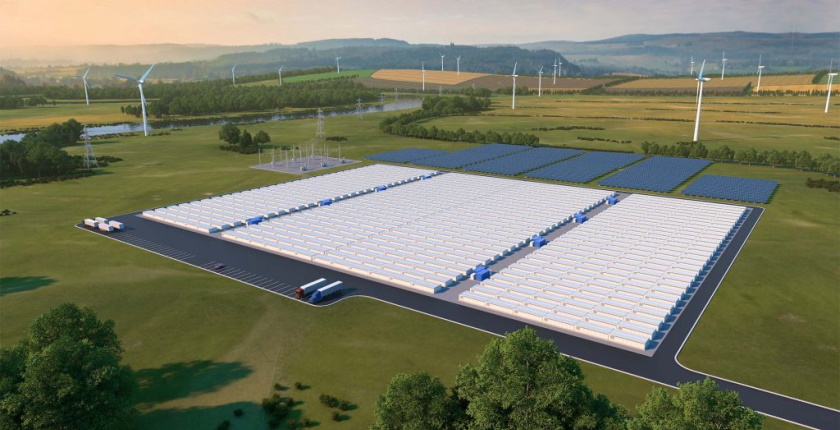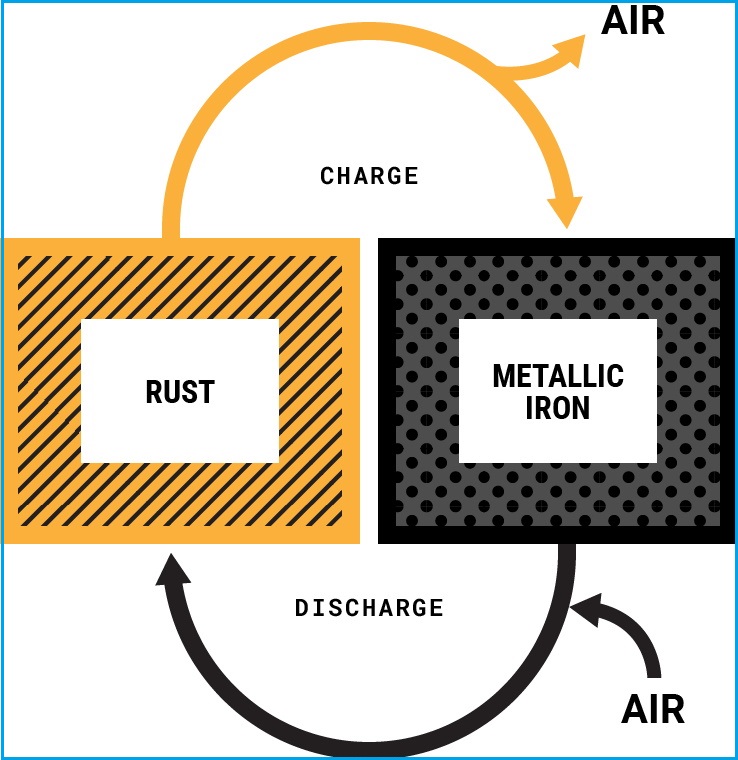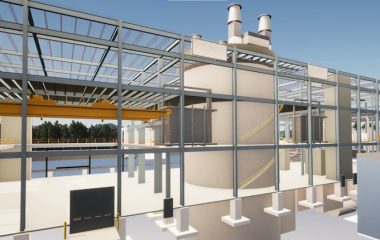
Photo: Form Energy
Share
Even though lithium batteries are still the most common way to store energy – a challenge the world must overcome in order to substitute renewables for fossil fuels – they clearly create serious problems too, and that’s why they’re not a viable option for a sustainable energy transition. To replace lithium, alternatives are being developed around the world, such as iron-air batteries, whose commercial production in the United States is expected to begin as early as 2024.
Iron-air batteries were developed by Form Energy, a startup spun out of the prestigious Massachusetts Institute of Technology (MIT).
Form Energy’s batteries, according to US media, are ten times as cheap as lithium batteries, and they use iron, which is abundant all over the world. At the same time, iron-air batteries can last longer than lithium batteries, and are also safer, as they are not highly flammable.
The only downside to the new technology is that it can’t replace lithium in laptops or smartphones
The only downside observed so far is that these batteries are slow to charge or discharge, making them a less viable option than lithium in laptops or smartphones, for example. On the other hand, they are an excellent solution for energy storage at the national grid level since they can provide 100 hours of energy storage duration, far longer than lithium batteries, which last up to six hours. In this way, they can facilitate the integration of large-scale solar parks and wind farms.
These batteries are not perfect, but their manufacturing, much like the production of aluminum-sulfur, vanadium flow, or sodium-ion batteries, is far less harmful to the environment than the manufacture of lithium batteries. Also, reduced demand for lithium would ease the pressure on the supply chain, and perhaps even entire countries, such as Serbia and other Western Balkan nations, to approve lithium extraction projects despite obvious environmental harm.
The first factory will be built in West Virginia

Form Energy recently picked a site for its first factory, in West Virginia, and announced works will begin this year. The investment is estimated at USD 760 million, with the state earmarking a financial incentive package worth up to USD 290 million to convince Form Energy to choose the site.
The West Virginia Economic Development Authority has already allocated USD 75 million towards land acquisition and the construction of the factory.
Previously, private investors had recognized the project as promising. In October 2022, Form Energy raised USD 450 million, boosting its budget to USD 800 million.
The investors include Bill Gates’s Breakthrough Energy Ventures, and steel giant ArcelorMittal.
How iron-air batteries work
Form Energy’s pilot facility, with a capacity of 1 MW/150 MWh, will be put in operation this year in cooperation with power producer Great River Energy, while talks are under way with Georgia Power on a 15 MW/1,500 MWh battery,
An iron-air battery, according to US media, is about the size of a washing machine or a dishwasher, and contains 50 cells surrounded by an electrolyte. Charging and discharging is based on rusting.
When discharging or delivering energy, a battery uses oxygen from the air to turn iron into iron oxide (rust), while a reverse process is used when the battery is charging (rust is turned back into iron, with the release of oxygen).


















“10 times as cheap”
Mathematically, not possible. It would have been much more accurate to say 90% as cheap.
Also when looking at storage of this capacity, comparing to lithium is inappropriate. It’d be more appropriate to compare with mechanical storage approaches.
very helpful
How can I invest in this company
Why not mention the efficiency, BMS needed, dangers of under or overcharge etc..
The biggest con about these batteries is that they are less flammable, and harder to blow up. Of course, my favorite thing about batteries is that they can blow up. They seem pretty cool, but I would have to give them a 0 out of 10 for this sole purpose.
Yes, he is definitely right.
”size of a washing machine” how much wattage does 50 cells deliver and will this be a solar sized battery for residential use ??
This will definitely NOT be for residential purposes, as it stated, but rather to supplement national/regional grid storage.
This is embryonic, so as the evolution progresses, washing machine sized batteries may be the energy source for our homes for the future.
This is the end of a beginning, not the beginning of an end.
Reads like a copy paste of a press release without any critical thinking.
What I miss in the article is the charging / discharging efficiency. What are the energy losses in the conversion? I have heard that the losses go up to 30+ % per cycle and that would be a big con…….